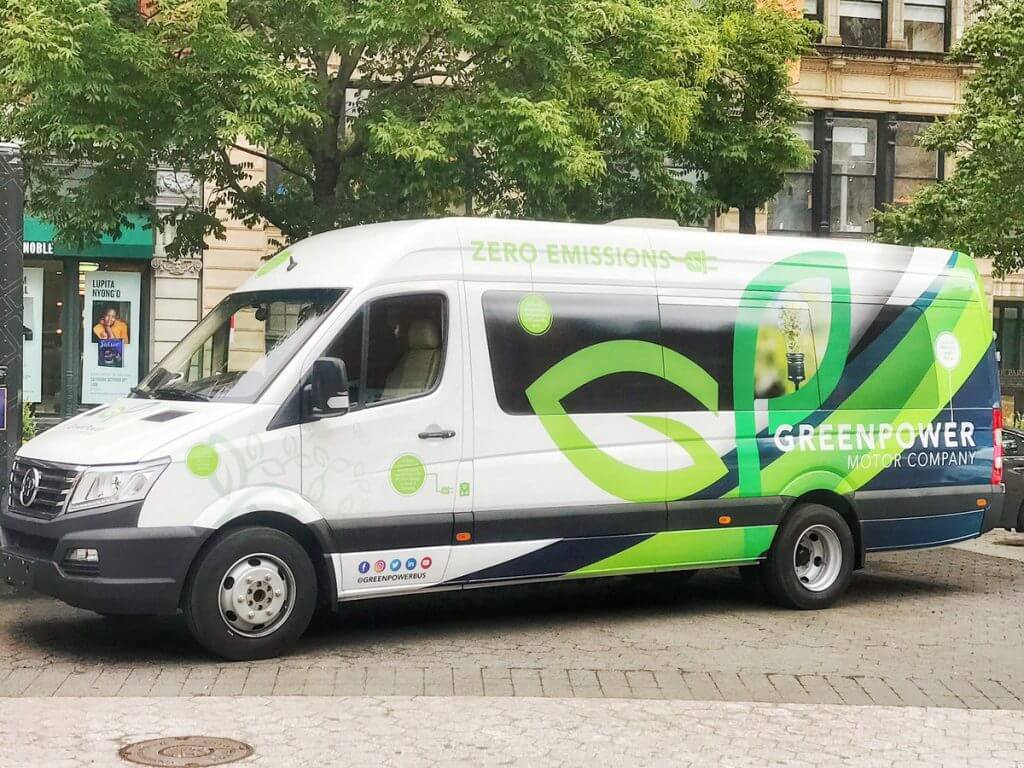
Perrone Robotics is working with GreenPower Motor Company to deliver an electric powered autonomous EV Star transit vehicle to the Jacksonville Transportation Authority (JTA)—an early step toward developing an autonomous vehicle (AV) transportation network in the city.
Crozet, Virginia based Perrone is integrating autonomous components into the EV Star via its TONY (To Navigate You) retrofit kit, with delivery of the vehicle expected later this year, Founder/CEO Paul Perrone said. JTA has visions of a large deployment of autonomous vehicles through the Ultimate Urban Circulator (U2C), a multi-phased program that will convert and expand the Skyway, an automated people mover, into an AV network that better connects downtown Jacksonville.
“With this new partnership, the Jacksonville Transportation Authority will expand and ramp up our AV Test & Learn activities,” JTA CEO Nathaniel P. Ford Sr. said, according to a news release about the partnership. “This work is laying the foundation for what will be the nation’s first public transportation network powered by autonomous vehicles.”
In this phase of the project, JTA will be trained on how to operate the emissions-free shuttle, which will be tested in and around Jacksonville, Perrone said. Operations will begin in a testing facility and then move to the downtown area.
The ADA compliant vehicle can carry up to 19 passengers and travel at highway speeds, Perrone said, which is important because most autonomous shuttles travel about 12 miles an hour or less.
“It looks like a transit van because the retrofit drops right into these vehicles,” he said. “We forged a partnership with GreenPower, the OEM of the vehicle, to make it part of a standard offering. It becomes part of an option they can offer right away from the factory.”
JTA is actively soliciting partners for future phases of the U2C project, and Perrone is bidding to be part of those phases as well.
“We were down there right before the pandemic in February and brought a vehicle. We had it driving around downtown Jacksonville and were able to give people rides,” Perrone said. “We’ve been doing this for 17 years, so we know it’s going to work well.”
The kit
Perrone’s retrofit kit for autonomous transit of people and goods is vehicle agnostic, meaning it can be used in transit vans, trucks, buses and shuttles. Early versions of the kit were a little bulky, which is fine for testing but not commercial operations, Perrone said. TONY goes inside the vehicle where it isn’t seen. The kit is easy to install, with it taking about a day for vehicles to adapt. The kit can be dropped into existing vehicles or added to new vehicles.
TONY includes commercial off-the-shelf hardware and the company’s software and kit solution. Perrone’s MAX is a full-stack autonomous software platform that is vehicle, sensor, controls and communications protocol agnostic. It performs sensor data integration and perception, sensor fusion, artificial intelligence (AI) driven maneuver selection and path planning. Pedestrian and vehicle avoidance enable TONY to safely navigate intersections and roundabouts, even in harsh weather.
TONY comes equipped with a variety of sensors, including LiDAR, radar, camera, GPS and ultrasonic. Other features include drive-by-wire adapters for steering, brake, throttle, and shift controls as well as a watchdog platform to monitor and validate the autonomous system.
The kit can be used in a variety of autonomous vehicle applications, especially when flexibility is required.
“The vehicle agnostic approach is important to a transit agency that doesn’t want to be tied down to one particular vehicle,” Perrone said. “It may need a bus for one application and a transit van for another. All the different applications look the same to our retrofit kit.”
Other projects
TONY is being integrated into vehicles for a variety of other projects, including a shuttle for military base deployment, in yard trucks for a logistics company, and in mining trucks for Liebherr. The TONY platform is in more than 30 different autonomous vehicles.
The kit makes level 5 autonomy possible, Perrone said, and he expects to see that reached in some of the applications performed in controlled environments yet this year or next. TONY demonstrated the ability for level 5 autonomy in Virginia last year, successfully completing tests with the electric Polaris GEM autonomous shuttle without the safety driver ever needing to take over. The vehicle safely transported more than 750 passengers during the three-month trial.
“The retrofit kit approach for vehicle agnostic drop-in is unique,” Perrone said. “When we talk about going driverless for certain operational design domains it doesn’t scare us. We know we can do it. It just has to be done carefully.”

